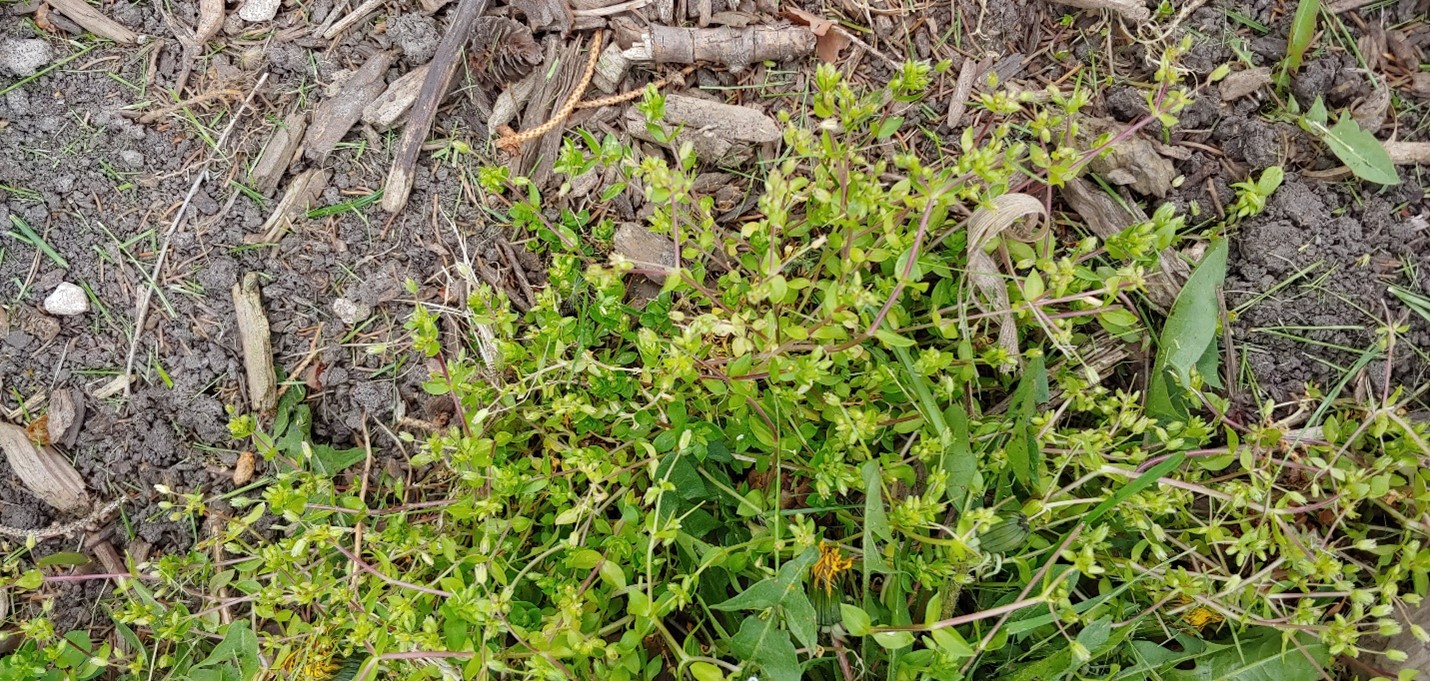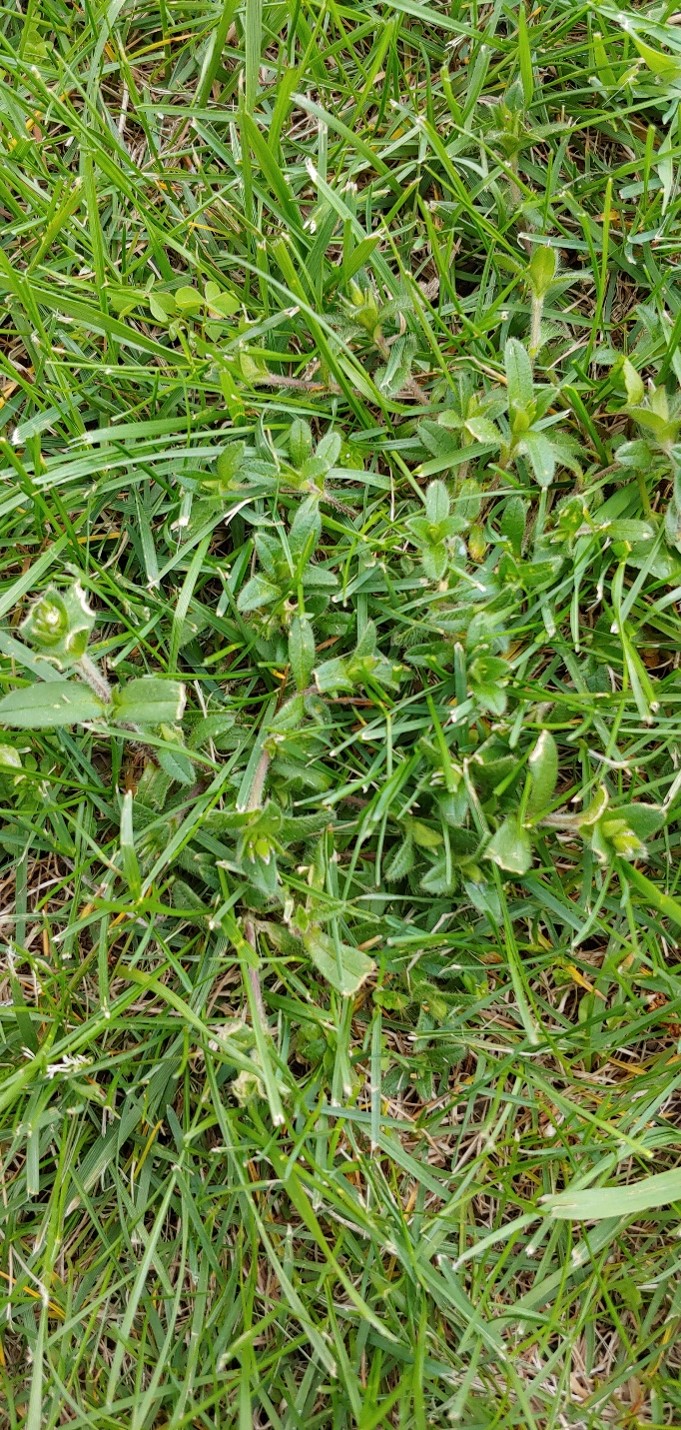Issue 1, May 2, 2023
Common Chickweed
Spring is finally upon us. While many of us would like some warmer temperatures, cool-season annual weeds such as common chickweed are greatly enjoying these cooler days. In many areas where a preemergent herbicide was not applied last fall for broadleaf weed control, quite a bit of chickweed can now easily be found. Its bright to light green color gives it away. In fact, I’ve seen some far enough along in development and the color is light green to yellow. This is how this plant looks before dying. That’s the good news for us about this weed. It won’t be here much longer. If common chickweed is a problem weed for you, plan to prevent future infestations in the fall. Mulch works well to prevent germination in landscape beds. For lawns, control options are discussed below.

Common chickweed that has gone to seed, Michelle Wiesbrook, University of Illinois.
Common chickweed (Stellaria media) is a cool-season annual (also known as a winter annual) member of the Pink family (Caryophyllaceae) that reproduces by seeds. Normally, cool-season annuals germinate in the autumn, flower the following spring, and die soon after summer temperatures rise; common chickweed, however, may occasionally persist through summer in sites protected from heat and drought. Common chickweed occurs in cool, moist, shady, often compacted, fertile sites in spring and autumn.
Common chickweed often forms large, dense patches in mowed areas but grows more upright in unmowed settings. The stems will often form mats over surrounding low growing plants. The stems are softly hairy and can root at the nodes when lying prostrate. The roots are shallow and fibrous. Leaves are bright green, opposite, simple, broadly oval, and usually less than 1 inch long. Its small, spring-borne white flowers are approximately 1/2 inch in diameter, have five petals, and are star shaped. The 5 petals are deeply lobed and appear from a distance as 10 petals.

Common chickweed actively growing but in flower, Michelle Wiesbrook, University of Illinois.
To control common chickweed without chemicals, maintain turf density and health by employing proper turf culture and mechanically remove the weed from the site. For chemical control, apply postemergence herbicides (for example, products containing 2,4-D, MCPP, dicamba, clopyralid, triclopyr, carfentrazone, florasulam, or penoxsulam) in midspring or mid- to late autumn during active growth. Plants should be green. Remember, yellow ones are at the end of their life cycle. Apply preemergence herbicides (for example, products containing benefin + trifluralin, dithiopyr, isoxaben, pendimethalin, prodiamine, or pronamide) before germination in late summer or early autumn. These lists are provided for reference and are not all-inclusive. Please carefully read and follow all label directions. Hand removal can also be used as this plant pulls easily. It’s important to remove it prior to seed development. Be sure to bag and remove any discarded weeds from the site to prevent further development before it dies.
A closely related plant is mouseear chickweed (Cerastium vulgatum). This weed has a similar growth habit, however it is a perennial which commonly roots at the nodes. The leaves are densely hairy and typically quite oblong. It occurs less commonly in a general turfgrass or landscape setting.

Mouseear chickweed growing in a lawn, Michelle Wiesbrook, University of Illinois.
Adapted from past HYG articles by Tom Voigt, Bruce Spangenberg, Luke Cella, and Michelle Wiesbrook.